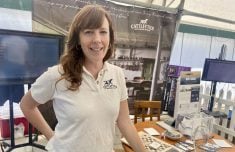If you follow the rules, these farmers say, peer advisory groups can build your business
There’s a natural tendency to think you’ve got the right answers, and to take pride in your management,” says James Rybka.
With a 4,100-acre grain farm near Prince Albert in Saskatchewan, however, Rybka is part of a 10-member group of farmers that meets regularly three times every year to dissect each other’s business and production plans.
Its goal is to undermine that natural tendency, and to run roughshod over that pride.
Read Also

Producers aren’t panicking over tariffs and trade threats
The Manitoba Canola Growers Association (MCGA) surveyed its members this spring to get a sense of how trade uncertainty was…
Oh… and the goal is also to help create the best possible business plans, ones that are really worthy of some respect.
“You wouldn’t want to do it with your immediate next-door neighbours,” Rybka says.
Farming 100 miles to the south, Kenton Possberg, a grain producer who farms about 15,000 acres near the east-central town of Humboldt, says going it completely alone would limit his ability to respond to new threats and to capitalize on new opportunities. Instead, Possberg participates in the business management group with Rybka.
“It really opens up your train of thought,” Possberg says.
This whole thing might look like something most farmers would enjoy about as much as a cat likes a shower. But it’s something other industries do and farmers should learn from that, Possberg says.
“There’s a group for manufacturers here in the region — they get together about four times a years and they talk about anything and everything,” Possberg says. “There’s no reason that can’t work in agriculture.”
The group was founded 10 years ago when Saskatoon-based financial planner Leo Kosokowsky did something unique — put 10 grain farmers in a room to talk candidly about their costs. Today that group is still meeting, and still talking.
Kosokowsky’s management club was so helpful to the members that in 2004, he set up his own consulting company and the members now pay him to organize the meetings.
Rybka and Possberg and participants of similar groups say the key to making a peer group like this work is its composition. Membership is by invitation only, and organizers are careful to ensure the group contains farmers who aren’t operating within the same trading area.
“It lets you compare your operation with other farmers who aren’t your direct competition and look at what you’re doing and what they’re doing,” Rybka says.
Both producers say the geographic dispersion throughout the province gives them the best of both worlds. The farms are close enough that there are only subtle differences in their cropping options and the basics of their operations, but at the same time they’re far enough away that they can benefit from different and fresh perspectives.
There’s also a fair bit of caution about who gets invited.
“These are people with a very good public reputation,” Possberg says. “They’re well thought of, or they wouldn’t be invited.”
The process began slowly, with the producers learning a bit more about each other and establishing a level of personal trust. The farmers involved in the group set some simple basic ground rules about confidentiality, and then they began to share their information. Once that happens, they’re able to get down to work.
“There has to be reciprocity,” Possberg says.















